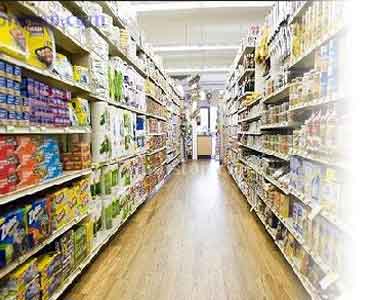| |
|
| |
|
 |
Supply
Chain by the Numbers |
| |
|
| |
- March 17, 2022
|
| |
|
| |
|
| |
|
| |
Logistics Firms Commit to Planned Ocean Shipping Portal; Retail Sales Slow in February, Maybe Due to Inflation; US Apparel Company to Open Plant in Alabama; eCommerce Sales Predicted to Rise Sharply in 2022 |
| |
|
| |
| |
| |
| |
18 |
|
| That is how many logistics-related firms have signed up for a new government sponsored data portal, part of Biden administration’s efforts to reduce delays and general chaos in ocean shipping. The companies agreeing to participate include ocean carriers, retailers and freight forwarders, and such big names such as Target, FedEx, container carrier Mediterranean Shipping Co. and freight forwarder C.H. Robinson Worldwide. The initiative is called the Freight Logistics Optimization Works, and is designed to allow companies from ocean containers to warehouse operators to better share information, the lack of which across the many parties involved some say is a major cause of the problems. On a radio interview this week, Transportation Secretary Pete Buttigieg said the data portal, for example, could show exporters how many days they have to fill a container for shipping, or let truckers see when warehouse space is available so they can time when to drop off a load. The administration said it hopes to get the participation needed to build out the data exchange by the end of summer. How long it will take after that is anyone’s guess. |
|
|
| |
| |
|
|
 |
| That was the small rise in US retail sales excluding automobiles in February versus January, according to data released Wednesday by the Commerce Dept. That was well below consensus economist expectations for 0.9% growth, as rapidly rising inflation may be causing consumers to cut back on spending and avoid some new purchases. However, on a year-over-year basis, retail spending including autos was up 17.6%, the Commerce Department said. The retail spending numbers were well below the rise in prices, which increased 0.8% in February versus January. Maybe surprisingly, the biggest drop in February’s numbers came from on-line shopping, with non-store sales down 3.7%. The February drop was sudden – revised numbers for January from the Commerce Dept. showed a month-over-month seasonally adjusted jump of 4.9% before the drop to almost flat last month. |
| |
| |
|
|
|
| |
| |
$1 Trillion |
 |
Despite the drop in February noted elsewhere on this web page, that is the predicted level of ecommerce sales in the US this year, according to a new forecast from Adobe Analytics. The Adobe forecast represents a jump of 13% from 2021, when Americans spent $885 billion. Among the biggest changes will be in on-line grocery shopping, which rose 7.2% last year to $79.2 billion after more than doubling in 2020, as consumers preferred the safety and convenience of home deliveries and curbside pick-up. Adobe expects on-line grocery spending to top $85 billion this year, another 7% increase. But Adobe sees low growth in apparel sales on-line, reaching $130 billion in 2022, a small increase from last’s year’s $126.2 billion. Adobe also reported that US consumers now on average spend $13.6 billion each month on electronics, up from the $9.9 billion spent before the pandemic. |
| |
| |
| |
| |
| |
|
|
|
| |
 |
 |
| |
 |
![]() |
 |
|
| |
 |
Feedback |
|
|
|
![]()
|
No Feedback on this article yet.
|
|
![]() |
|
|
|
![]() |
 |
![]() |
 |
|
| |